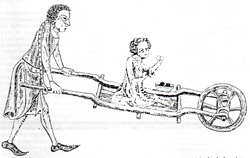WHAT IS A CONSERVATION AREA?
So often have we heard an elderly resident regretfully recall ‘the fine old building which used to be on that corner’ or deplore the loss of some quiet courtyard with its shady trees. The pressures of modern living and the developments in the second half of the 20th century have played havoc with much of our building heritage by destruction, neglect, or unsympathetic treatment.
Progress is essential and we must accept change but none of us would wish to continue to lose the character of our old town centres and attractive villages and therefore Conservation Areas were introduced with the Town and Country Planning Act 1971.
Although its title may seem self-explanatory the designation of a Conservation Area has much more significance. Its purpose is to determine those areas which have special historic, architectural, or environmental interest and to draw the attention of all concerned to the need to maintain and improve those areas. Not only does it provide the Planning Authority with legal powers of control, but it fosters a sense of pride in the residents of the area.
Planning approval is required for any work which will change the external appearance of any building in a Conservation Area, but the scope of control goes far beyond just buildings. It includes the preservation and planting of trees; you cannot fell or lop a tree without prior notice to the Planning Authority. It covers the management of traffic, control of street furniture, paved areas, advertisements, overhead lines, to quote but a few. It accepts the need for change, the need for new buildings and for alterations but will permit only materials sympathetic with the local environment. It sounds very restrictive and indeed it is; but it should be an acceptable restriction if it protects the very environment which attracted us here in the first place. There is, however, a credit side. There are grant-aid schemes which are applicable only to owners of buildings in Conservation Areas and Outstanding Conservation Areas. Sources of information concerning grants and loans are given at the end of this guide.
WHY IS STEYNING A CONSERVATION AREA?
Time has dealt kindly with Steyning. Its wealth of old buildings has the march of progress; it was but lightly scarred by enemy action in war and the threat of destruction by increasingly heavy commercial traffic has been averted by a relief road round the town This process of preservation by a combination of providence and design, has been consolidated by the Conservation Area concept.
Buildings of almost every century from around 1 10() AD are represented in Steyning and of these the unusually high number of 150 have been listed as buildings of architectural or historic interest, that is, included in the national schedule of buildings protected against demolition or unsuitable alteration, of which 125 are in the Conservation Area. This numerical fact alone justifies particular consideration, but this mixture of styles set in a meandering and undulating street pattern creates an atmosphere of charm and antiquity which also makes Steyning a visual choice for recognition as a Conservation Area. Subsequently, on the advice of the Historic Buildings Council, it has been given the further designation of Outstanding Conservation Area.
For more information on the Steyning Conservation Area and its management, download this document published by Horsham District Council.
